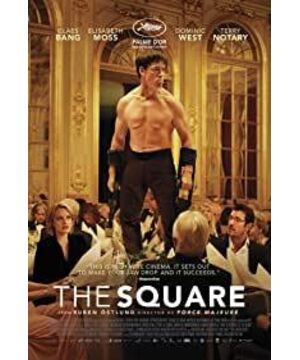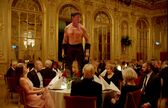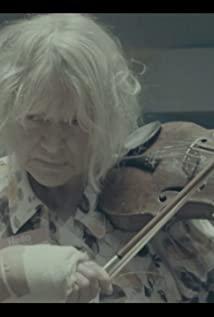Conclusion: This is one of the most precise and powerful films I've seen in recent years, but I don't really like it.
This is a Swedish movie. I lived in Västerås, Sweden for a summer vacation, during which I also went to Stockholm and Gothenburg. Therefore, although this film looks a little too "sexy" to the Chinese, but based on my superficial sensory impression of Sweden, this film's interpretation of real life is actually more realistic. Except for some downtown areas, shopping malls, slums and exhibition venues like in the movie, it is true that the overall living conditions of Swedish cities give people a sense of almost stagnant tranquility.
It's not far from real life. This is my judgment on the overall world view of the director's film (and you will find that every group with a large number of people, the group performances are very good, and they have a special sense of hierarchy).
Why do I say it's the most precise and powerful movie I've seen in recent years? It's because the script is logically detailed, and all the narrateable plots in the entire movie are constantly telling the same theme, like a megaphone, over and over again, getting louder and louder.
(Spoilers below)
The climax of the film is generally considered to be the scene of the gorilla performance artist making a big dinner party one hour and forty minutes after the movie, and it is not only climax, but also brutal. But what I want to remind everyone is that the same cruelty has actually been shown repeatedly in the previous clips of the movie.
About forty-five minutes into the film, there was already such a scene-in the exhibition hall, the artist Gihoni's mound artwork "You have nothing", a young audience came during the day. Just such a young audience, when he timidly took out his mobile phone and wanted to take a picture, he was reminded by the librarian at the scene not to take pictures. It's like a woman's only "suiter" has been coldly rejected by her. However, turning around, this exhibit was destroyed by the cleaners while cleaning, and then piled up again - this is equally brutal and cruel, and it is not fundamentally different from the gorilla performance art destroying the relationships at the dinner party. It was a rude foreign force that broke the rules within the "square".
The exhibition area is a "square" - art is all about interpretation by the artist, just like identity politics LGBTQ. It's a "rule within a box".
The interpersonal relationship at the banquet is also a "square" - the gorilla offended and humiliated the guests, and the guests tolerated it because everyone knew that this was a dinner party in an art gallery, and that it was a performance art. Performance art is "rules within the box", so be tolerant, because it is art, if I jump up and beat this orangutan, it will be very rude, and it seems that I don't understand performance art, if the gorilla artist stops at any time and says how can you interrupt I perform? So am I really an idiot? However, the gorilla did not stop. It ignores the rules inside the block.
It's like when you're offended by an elder at a family gathering, you tend to laugh it off. There are also newlyweds who are already sullen because of the bridal behavior at the wedding, but they are not easy to have trouble with their relatives and friends. This is the invisible "square" in your heart.
"The cube is a sanctuary of trust and concern, and within it, we are all equally responsible." It is ironic to see this phrase repeatedly emphasized in the film.
Cruelty isn't just the two things mentioned above, however. Shortly after the film begins, the curator is willing to buy a sandwich for the female beggar. But, equally cruel, when the curator paid for a sandwich for the female beggar, perhaps more or less moved by her kindness, the female beggar suggested to him: don't put onions. This time, the destruction of the "square" is more obscure, and its brutal and cruel nature is reflected in the curator's subsequent attitude - he threw the sandwich to the female beggar, "You choose the onion yourself", he said, you like it Do not eat.
Also, Tourette's patients' participation in a press conference made the people at the conference, even the audience watching the movie, unhappy, but just at the emotional critical point where everyone wanted to drive this person away, there was an uncle in the movie for him. spoke. This uncle is obviously an egalitarian. However, the director turned his head to tell you in the movie: The curator and the female reporter Ann had a drunken affair, but also by satirizing the behavior, words and deeds of this Tourette's patient to achieve complicity.
There were even those few Chinese tourists that most people didn't notice—they held cameras in their hands and looked around, and before they reached the limits of the art museum, they were directly reminded by the girls on duty in the museum: Here is the The Art Gallery, the Royal Palace is on the other side! Because she knew that most of the Chinese tourists came to see the palace, and the art gallery had nothing to do with them - isn't this a hidden cruelty? I think it is.
Actually the film is gradual, repeating this theme over and over again. The Gorilla Artist scene is just the final picture. Blocks are everywhere, but blocks only exist in the minds of players who know the rules. The rules of blocks are broken at any time. This topic was pointed out by the curator when the female reporter interviewed at the beginning: artworks are only valid in the art museum.
The above is why I say that this film is precise and powerful. Its script design is very careful, sometimes too much and too deliberate, such as the installation artwork in the background of the conversation between the female reporter and the curator.
Finally, why don't I like this movie very much. This is a very subjective reason. If you want to continue to listen to me, if you don't want to, you don't have to read further.
As I said, the movie doesn't stray too far from real life, but it doesn't explore love and life and death either. Not discussing life and death and love seems to be a sin I want to add, but it makes the whole movie present a very interesting feeling - in my opinion, its lens language, script design and the presented social reality, all is the most contemporary and cutting-edge; but at the same time, the whole ethos of the film, in the style of 19th-century Chekhov, is about a man who is framed and dragged down by various contradictory principles, the square of corrupt public morality . It's all the ridiculous things about the lifeless clerks, city dwellers, officials, and middle-class people that Chekhov's works have repeatedly portrayed -- the curator's fear of being recognized by the ghetto, of being sexually coerced by female reporters, of being harassed by women. The children of the Arab remnants were corrupted, they hated their daughter's violent chaos at home and slammed the door, so they were furious... Everything was to maintain their professional image in the cube. Hiding and hiding, and finally dodging a shot and a knife, the biggest setback in my career came from a politically incorrect short video. In human society, when trust and concern have come to the point where they have to be spoken out, trust and concern are over.
The European films that moved me were the New Wave films of the economic development period of the 1960s and 1970s after the devastation of World War I and World War II. These films, without exception, discuss life and love, the passion that erupts because life and love are humiliated and ravaged (love is just life and death). Good-looking or bad-looking, clever or unsavvy, gangsters or childhood, it doesn't matter, they are all products of that era.
Just as "Cube" is a product of this era.
I liked the movies more from that time. They are not the same as the contradictions of "Cube". In the movies at the time, you discriminated against some people, that didn't matter; you destroyed an artist's work, that didn't matter; you kicked a Tourette out of the venue, that didn't matter; people would be there In the movie, there are fights and even bloodshed for these things, but that's not important, you understand? You can feel the director and the writers don't think it matters. The director at that time was still concerned with the long-term fate of the people on the desolate ruins, and how their bodies, wrapped in sand, grass, and mud, hugged, kissed, and had sex when they met each other naked.
View more about The Square reviews










